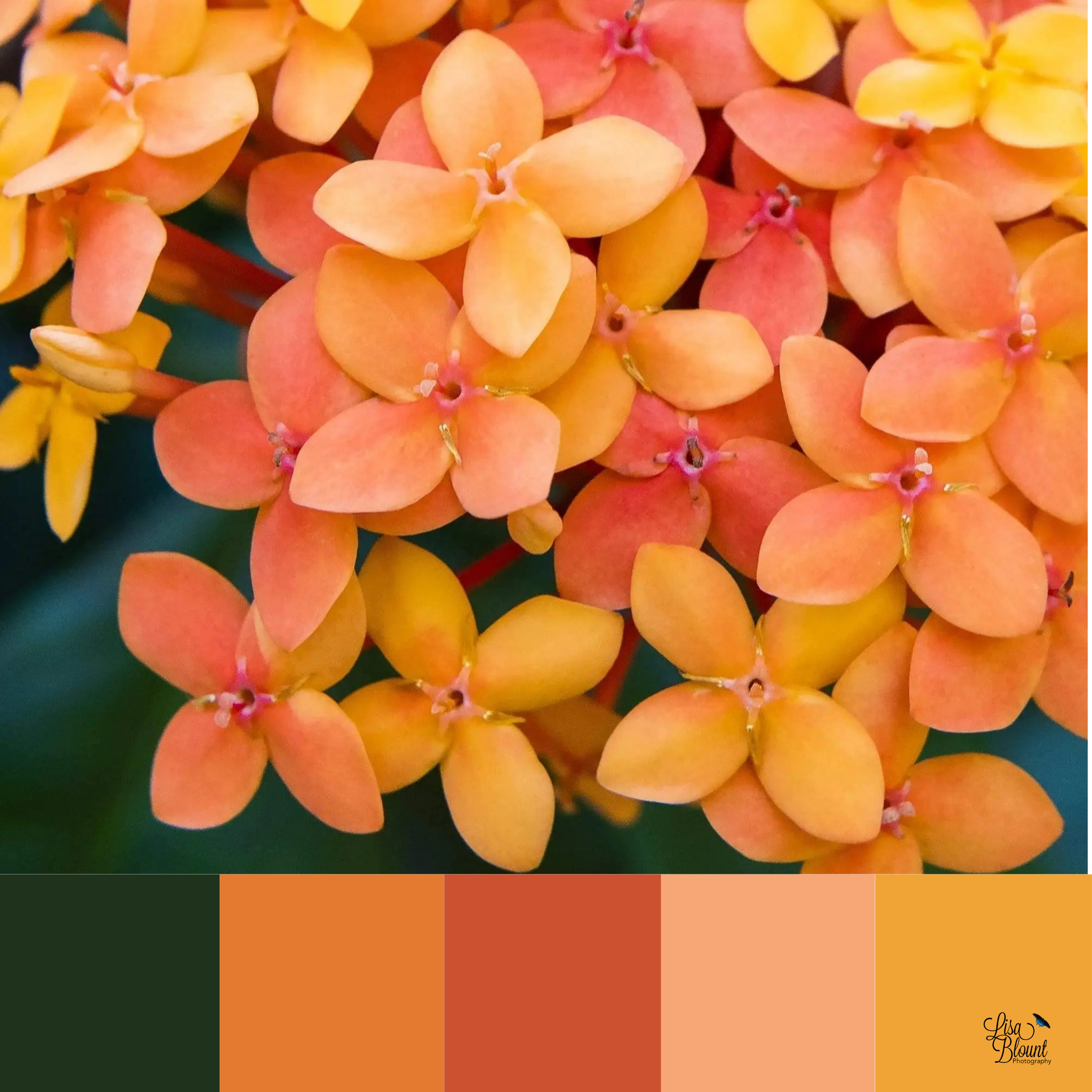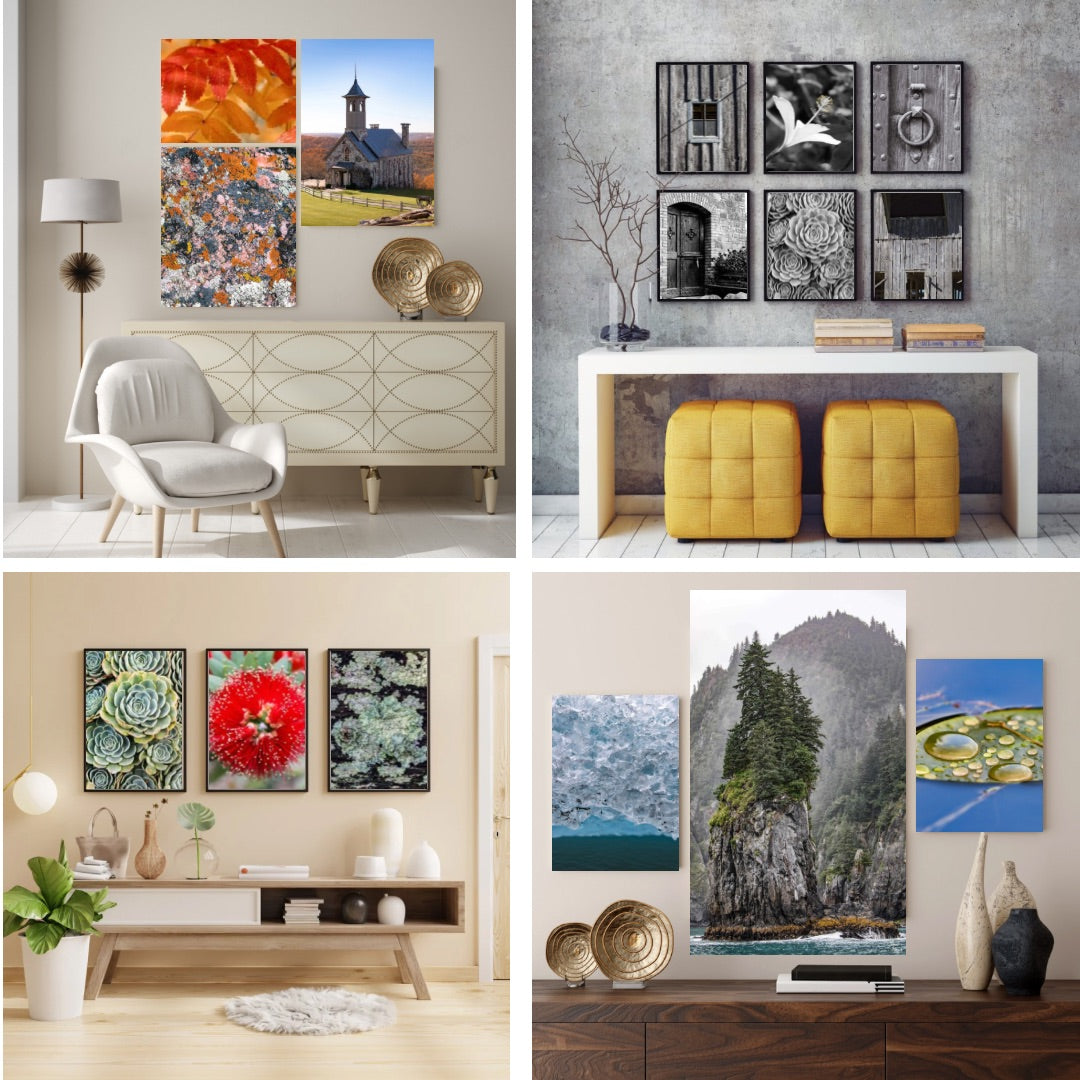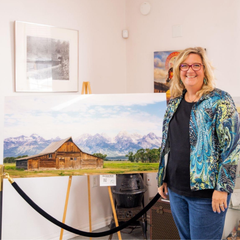The living room is more than a place to unwind—it’s the soul of your home. It’s where style meets substance, where meaningful conversations unfold, and where design speaks without saying a word. One of the most impactful ways to define this space? Large-scale, statement-making wall art that elevates both the aesthetic and the emotional tone of the room.
But choosing the right piece can feel overwhelming—especially when you’re investing in art that’s meant to last and impress. Whether you’re an interior designer sourcing for a client or a homeowner with an eye for detail, this guide shows you how to choose large art that feels custom-curated, well-placed, and genuinely connected to the space around it.
Start with Scale and Proportion
Large art deserves a thoughtful stage. One of the most common mistakes—even in luxury interiors—is choosing art that’s too small.
- Width rule of thumb: Target 60–75% of the furniture width beneath it. Over an 8-foot sofa (~96"), look for a piece around 58–72" wide.
- Center height: Aim to place the center of the artwork at ~60" from the floor (adjust for very tall ceilings or deep sofas).
- Gap above furniture: Leave 6–10" between the top of the furniture and the bottom of the artwork to keep the vignette visually connected.
Define the Mood You Want to Create
Ask first: what feeling should the room give off? Your artwork is the most emotionally expressive layer—it can ground the space in tranquility, excitement, drama, nostalgia, or refinement.
- Nature-inspired pieces bring calm, presence, and that subtle “exhale.”
- Abstract works add movement, energy, and contemporary edge.
- Vibrant tropical scenes lift the spirit and warm up neutrals.
- Snowy, quiet landscapes cue coziness, reflection, and stillness.
Color Coordination: Build a Simple Mood Board
Art can unify your palette—or provide a bold, intentional contrast. Start by taking inventory of your walls, textiles, flooring, woods, and metals. Then shortlist artworks that either harmonize or punctuate.
Pull fabric swatches, rug snippets, wood samples, and printouts of potential art into a mini board. If your space leans cool gray + soft cream, a piece like Standing Alone—with misty teals and natural greens—adds gentle contrast while preserving a restful vibe. If accessories are already punchy, a quieter landscape can add breathing room.
Go Big—Let One Statement Lead
Large-scale art anchors the room and tells a story in one sweeping glance. Often, a single oversized piece feels more refined than a busy gallery wall.
When you invest in large art, you’re not just decorating—you’re defining the room’s identity. Go big. Let the details pull you in like a window to a place, memory, or mood.
Choose Art That Resonates Personally
The most elegant rooms don’t just look curated—they feel lived-in. Choose art that reminds you of a favorite destination, evokes a cherished memory, or simply brings you peace or wonder.
Framing, Medium & Lighting: Finishing Touches That Matter
TruLife® Acrylic gives a modern, gallery-clear finish—crisp, luminous, and low-glare, like peering through a window. Brushed metal brings industrial texture (beautiful on architectural or train pieces). Canvas warms lodge, rustic, and mountain homes—my Mountain Memories is a favorite on canvas.

Light it well. A small picture light or angled recessed spotlight gives your piece a subtle evening glow and a museum-level finish.
Ready to visualize it?
Explore my curated Large Wall Art for Living Rooms or request a quick design preview to see a piece mocked up in your space.
Avoiding Common Mistakes
- Going too small: Measure. If you’re between sizes, size up.
- Hanging too high: Keep the center ~60" from floor; leave 6–10" above sofas and mantels.
- Skipping the story: Choose original works or limited editions with meaning.
- Neglecting lighting: Don’t let art sit in shadows.
- Clashing styles: Contrast needs intention—echo materials or tones elsewhere.
Need Inspiration? Featured Works to Consider
- Aboard Alaska: Calm, spacious, and modern—great for minimalist or coastal spaces.
- Standing Alone: Nature’s resilience—perfect with earthy greens and neutrals.
- Bridal Veil Falls: Lush and uplifting—adds energy to light, modern rooms.
- Color of St. Lucia Pitons: Vivid tropicals for globally inspired interiors.
- Grand Teton Mountain Sunset: Warm romance for transitional spaces.
- Mountain Memories: Snow-cabin nostalgia for cozy, layered rooms.
Final Thoughts
When done well, wall art doesn’t just decorate—it transforms. Let it reflect who you are, what you love, and how you want your home to feel. If you’re unsure which piece fits best, I’m happy to help. Many works are available in custom sizes, and I love collaborating with designers and collectors.
Ready to elevate your living room? Browse my Large Wall Art Collection or request a personalized recommendation.
~ Lisa
Shop the Art:
Explore the fine art photography featured in this story:
- Color of Jenny Lake - Reflections of the Grand Tetons - Wyoming
- Lion of Lucerne Monument - Switzerland
- Hall Gazing Ball - Napa Region California
- Mountain Memories - Colorado Cabin in the Snow
- Aboard Alaska - Greeting Card Set (Glacier Discovery Train)
- Standing Alone - Kenai Fjords Alaska
- Bridal Veil Falls - Columbia River Gorge Oregon
- Multnomah Falls – Bring Oregon’s Beauty Home as Fine Art - Waterfall
- Lichen Potosi - Abstract - Missouri









